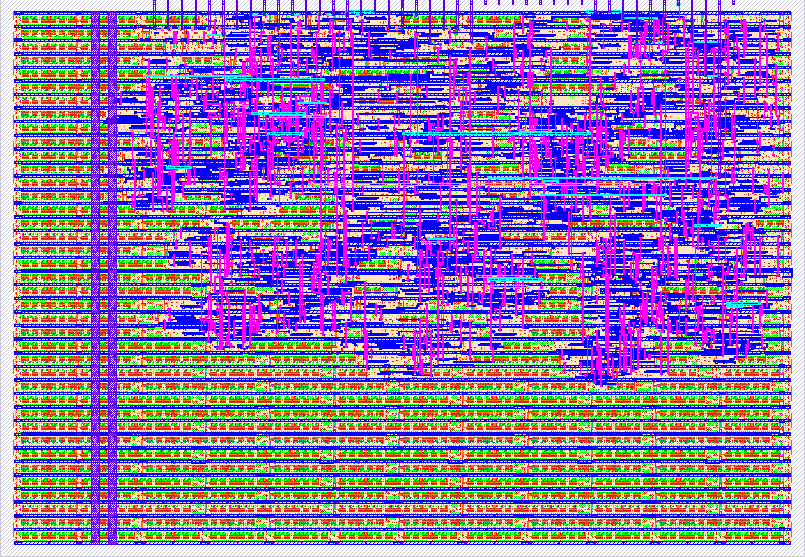455 Rotary Encoder WS2812B Control
455 : Rotary Encoder WS2812B Control

- Author: Fabio Ramirez Stern
- Description: A rotary encoder controls 12 WS2812B LEDs on a ring PCB.
- GitHub repository
- Open in 3D viewer
- Clock: 40000000 Hz
How it works
The rotary encoder adds/subtracts from a variable that determines which LED to turn on. Periodically, the chip sends out a signal for 12 LEDs out via uo0, according to the WS2812B protocol. The button connected to in2 inverts the LEDs, whether that happens gets also indicated through out1. Further, the register value of the variable will be put out via out2 to uo5.
The colour can be activated as follows: in3 for green, in4 for red and in5 for blue.
Intensity is set with the remaining two bits, in6 and in7.
How to test
Connect the rotary encoder outputs to in0 and in1. If your rotary encoder also has a built in push button, conntect that to in2, or use another switch with a pull down resistor.
The LEDs should be wired in series. The first LED's DIN input needs to be connected to the out0 of the chip.
Give the project a reset after power up and then rotate the encoder back and forth to see the light moving.
External hardware
-
A rotary encoder.
-
Any arrangement of 12 WS2812B like controlled LEDs. More or less will also work, you will just not get the full range, or some LEDs will stay off.
The seller called what I bought this: LED Ring 5V RGB WS2812B 12-Bit 37mm
IO
| # | Input | Output | Bidirectional |
|---|---|---|---|
| 0 | rotary encoder: CLK | DOUT | |
| 1 | rotary encoder: DT | inverted | |
| 2 | rotary encoder: SW | count0 | |
| 3 | green | count1 | |
| 4 | red | count2 | |
| 5 | blue | count3 | |
| 6 | intensity1 | ||
| 7 | intensity2 |